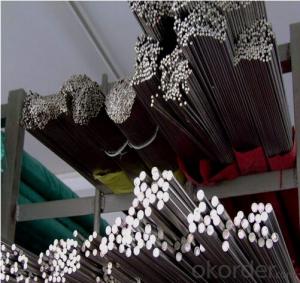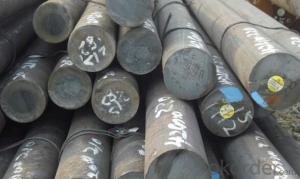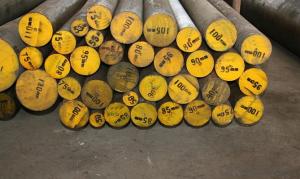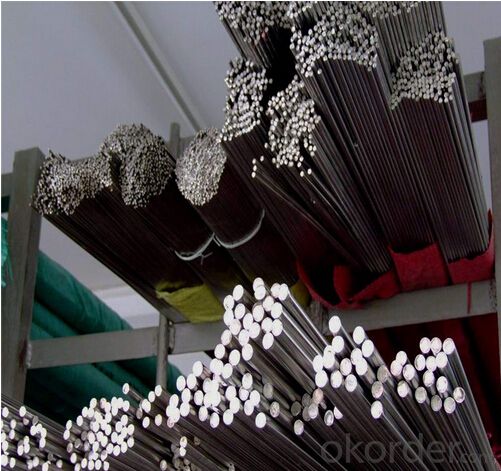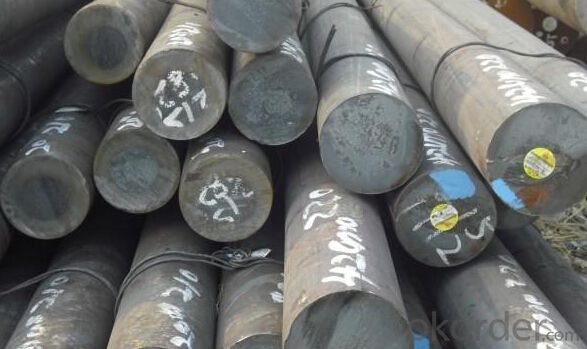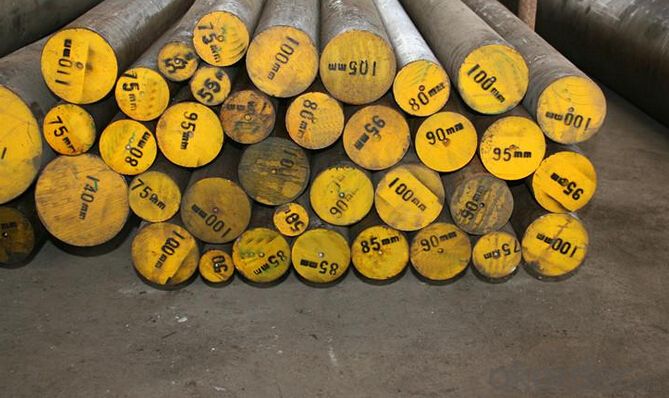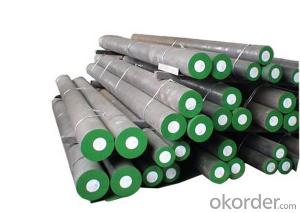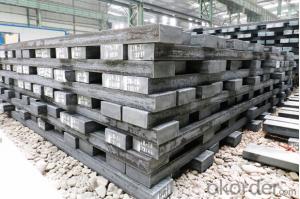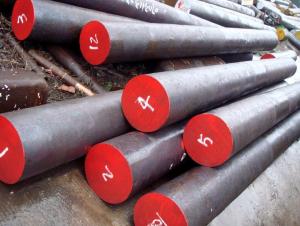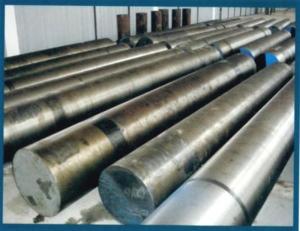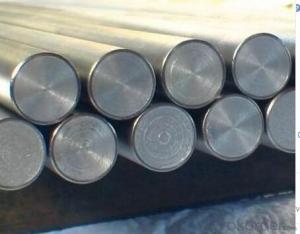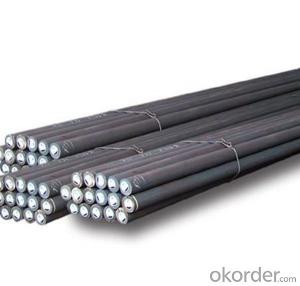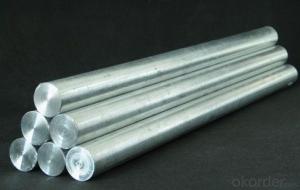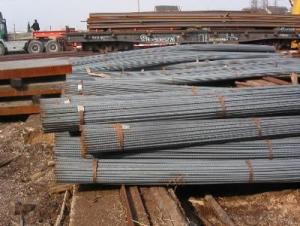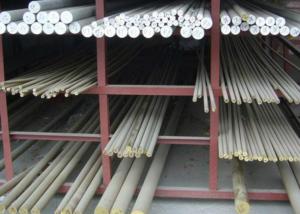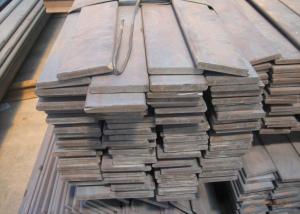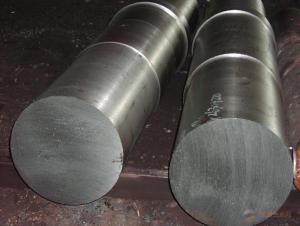GCr15 Bearing Steel Special Steel Carbon Steel
- Loading Port:
- China main port
- Payment Terms:
- TT OR LC
- Min Order Qty:
- 25 m.t.
- Supply Capability:
- 10000 m.t./month
OKorder Service Pledge
OKorder Financial Service
You Might Also Like
Specification
1.round steel
2.ISO9001:2008 certificate
3.Competive price and Best quality
4.On-time delivery
Chemical Composition(GB)%
C | Si | Mn | Cr | Cu | S |
0.95-1.05 | 0.15-0.35 | 0.25-0.45 | 1.4-1.65 | ≤0.20 | ≤0.020 |
Heat Treatment
Item | Temperature ℃ | Hardness |
Anneal | 790-810 | 170-207HB |
Quenching | 830-860 | 62-66HRC |
Tempering | 150-180 | 61-66HRC |
Characterstics
1.Uniform hardness,Good abrasion resistance |
2.High contact fatigue resistance |
3.Cutting performance in general |
Applications:
Used to make the load of the larger small cross-section conditioning and stress smaller large parts
Product show:
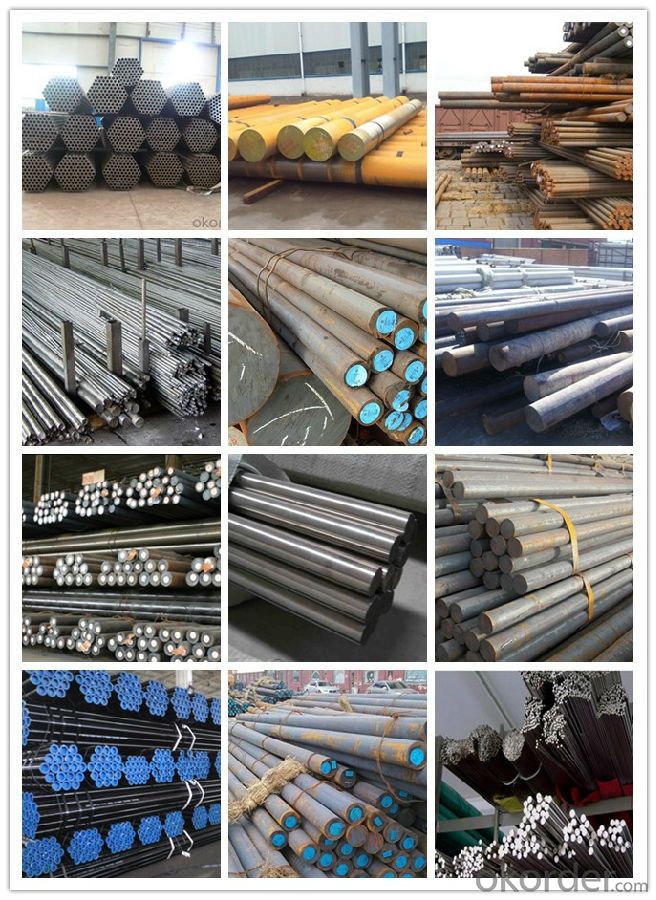
Workshop show:
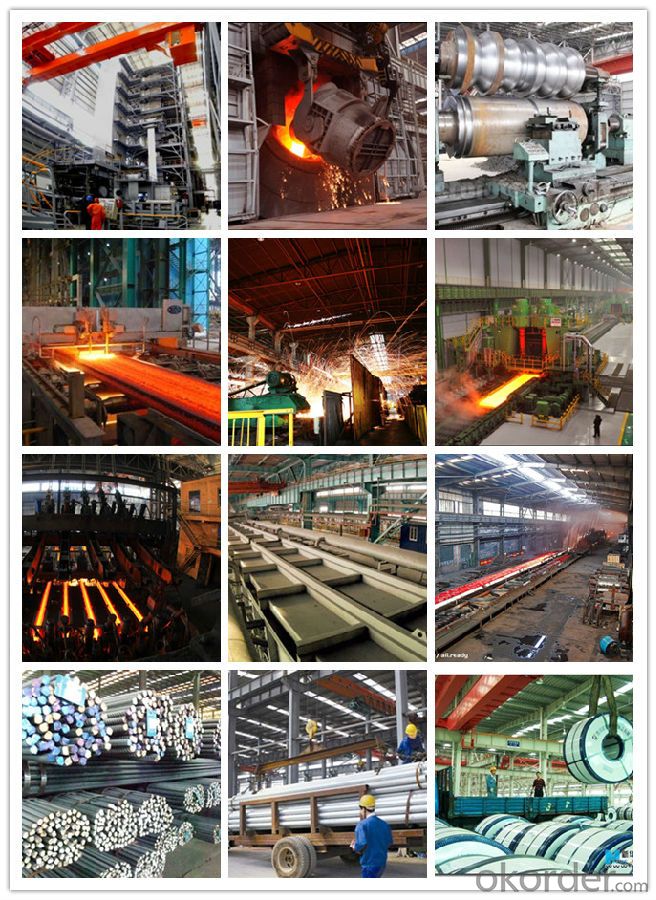
FAQ:
1, Your advantages?
professional products inquiry, products knowledge train (for agents), smooth goods delivery, excellent customer solution proposale
2, Test & Certificate?
SGS test is available, customer inspection before shipping is welcome, third party inspection is no problem
3, Payment Terms?
30% TT as deposit and 70% before delivery.
Irrevocable L/C at sight.
4, Trading Terms?
EXW, FOB, CIF, FFR, CNF
5, After-sale Service?
We provides the services and support you need for every step of our cooperation. We're the business partner you can trust.
For any problem, please kindly contact us at any your convenient time.
We'll reply you in our first priority within 24 hours.
- Q: What are the main advantages of using special steel in the aerospace industry?
- The main advantages of using special steel in the aerospace industry include its high strength-to-weight ratio, excellent fatigue resistance, and good corrosion resistance. Special steel can withstand extreme temperatures and pressures, making it ideal for critical components like aircraft engines and landing gear. Additionally, its superior mechanical properties and reliability contribute to improved safety and performance in aerospace applications.
- Q: What are the limitations of using special steel?
- Some limitations of using special steel include its high cost compared to regular steel, limited availability due to specific alloy compositions, and the need for specialized knowledge and equipment to work with it. Additionally, special steel may have lower ductility and toughness compared to other materials, making it less suitable for certain applications that require high impact resistance or flexibility.
- Q: What are the common challenges in heat treating special steel?
- Heat treating special steel can present a variety of challenges. One common challenge is achieving the desired hardness and strength while maintaining the desired microstructure. Special steels often require specific heat treatment processes, such as quenching and tempering, to achieve the desired mechanical properties. However, the high alloy content of these steels can lead to difficulties in achieving uniform heat distribution and controlling the cooling rate during quenching, which in turn can result in inconsistent hardness and potential distortion. Another challenge in heat treating special steel is managing residual stresses. During the heating and cooling process, differential thermal expansion and contraction can cause stress to build up within the steel, leading to potential cracking or distortion. Special care must be taken to minimize these stresses through proper heat treatment techniques, such as preheating and controlled cooling rates. Special steels often have stringent cleanliness requirements, as impurities or non-metallic inclusions can negatively impact their mechanical properties. Ensuring the cleanliness of the steel prior to heat treatment can be challenging and may require additional steps such as degreasing, pickling, or using protective atmospheres during heat treatment. Furthermore, some special steels are highly sensitive to overheating, which can lead to grain growth and loss of desired properties. Precise temperature control and monitoring are crucial to prevent overheating and ensure consistent results. Lastly, special steels may have specific time-temperature transformation (TTT) and continuous cooling transformation (CCT) characteristics that need to be considered during heat treatment. Understanding and adhering to the appropriate heating and cooling cycles are essential for achieving the desired microstructure and properties. In summary, the common challenges in heat treating special steel include achieving the desired hardness and microstructure, managing residual stresses, ensuring cleanliness, preventing overheating, and adhering to specific time-temperature transformation characteristics. Overcoming these challenges requires expertise, precise control, and adherence to strict heat treatment protocols.
- Q: What are the specific requirements for special steel used in the nuclear fuel industry?
- The specific requirements for special steel used in the nuclear fuel industry are stringent and demanding. These requirements are necessary to ensure the safety and reliability of nuclear power plants. Here are some of the key specifications for special steel used in this industry: 1. High temperature resistance: Special steel used in the nuclear fuel industry must be able to withstand high temperatures without losing its structural integrity. This is crucial as nuclear reactors generate extreme heat during operation. 2. Corrosion resistance: Nuclear fuel environments can be highly corrosive due to the presence of hot and pressurized water, radiation, and chemical reactions. Special steel used in the industry must have exceptional corrosion resistance to prevent degradation and maintain safety. 3. Radiation resistance: The nuclear fuel industry involves exposure to radiation. Special steel needs to have excellent resistance to radiation damage and embrittlement to ensure long-term structural integrity and prevent any risk of failure. 4. High strength and toughness: Special steel used in the nuclear fuel industry should possess high strength and toughness to withstand the extreme conditions experienced within a nuclear reactor. This ensures that the steel can withstand the pressure and stress exerted on it during reactor operation. 5. Low neutron absorption: Neutron absorption is a critical factor in nuclear reactors. Special steel used in the industry should have low neutron absorption properties to prevent interference with the nuclear reactions and to maintain reactor efficiency. 6. Strict quality control and traceability: The manufacturing and fabrication of special steel for the nuclear fuel industry must adhere to stringent quality control procedures to ensure consistency and reliability. Traceability is also crucial to identify the origin and history of the steel, allowing for comprehensive inspections and assessments. Meeting these specific requirements is essential for the safe and efficient operation of nuclear power plants. Special steel used in the nuclear fuel industry must undergo rigorous testing, certification, and quality control processes to ensure its compliance with these stringent specifications.
- Q: How does special steel contribute to the aerospace material recyclability?
- Special steel contributes to the aerospace material recyclability by offering high durability and strength, making it a preferred material for various aircraft components. Its recyclability is enhanced through processes such as melting and reformation, allowing the steel to be reused in new applications. This reduces the need for new steel production, conserves resources, and minimizes waste generation in the aerospace industry.
- Q: What are the different surface hardening techniques for special steel parts?
- Some of the different surface hardening techniques for special steel parts include case hardening, nitriding, carburizing, induction hardening, and flame hardening.
- Q: How does special steel withstand high temperatures?
- Special steel is able to withstand high temperatures due to its unique composition and manufacturing process. Firstly, special steel is made from alloys that contain elements such as chromium, nickel, and molybdenum, which provide increased resistance to heat. These elements form a protective oxide layer on the surface of the steel, preventing oxidation and corrosion at high temperatures. Furthermore, special steel goes through specific heat treatment processes, such as quenching and tempering, which enhance its strength and toughness. These processes involve heating the steel to high temperatures and then rapidly cooling it, followed by reheating and slow cooling. This controlled cooling and heating process modifies the steel's microstructure, making it more resistant to thermal stress and deformation. Additionally, special steel is often designed to have a high melting point, which allows it to maintain its structural integrity even in extreme temperatures. The specific combination of elements and their ratios in the alloy contribute to the steel's ability to resist softening or melting when exposed to high heat. Moreover, special steel may also incorporate specialized coatings or treatments that further enhance its thermal resistance. These coatings can provide an extra layer of protection against heat, oxidation, and corrosion, making the steel even more durable and long-lasting in high-temperature environments. In summary, special steel withstands high temperatures by virtue of its unique alloy composition, heat treatment processes, high melting point, and additional protective coatings. These factors work together to enhance the steel's ability to resist thermal stress, deformation, oxidation, and corrosion, making it a reliable and durable material for applications in extreme heat conditions.
- Q: Can special steel be used in the chemical industry?
- Yes, special steel can be used in the chemical industry. Special steel, such as stainless steel and corrosion-resistant alloys, are often preferred in the chemical industry due to their high resistance to corrosion, heat, and chemical reactions. These qualities make special steel suitable for various applications including storage tanks, pipelines, reactors, and other equipment used in the production and handling of chemicals.
- Q: What are the different types of heat-resistant steel?
- There are several different types of heat-resistant steel, including austenitic stainless steel, martensitic stainless steel, ferritic stainless steel, and nickel-based alloys.
- Q: Is special steel suitable for structural applications?
- Yes, special steel is suitable for structural applications. Its unique properties such as high strength, durability, and resistance to corrosion make it an ideal choice for constructing buildings, bridges, and other infrastructure where structural integrity is crucial. Special steel also offers excellent weldability and formability, allowing for versatile design possibilities in structural applications.
Send your message to us
GCr15 Bearing Steel Special Steel Carbon Steel
- Loading Port:
- China main port
- Payment Terms:
- TT OR LC
- Min Order Qty:
- 25 m.t.
- Supply Capability:
- 10000 m.t./month
OKorder Service Pledge
OKorder Financial Service
Similar products
Hot products
Hot Searches
Related keywords
